 |
||
|
||
| ||
Part IIMSI's and Gigabyte's booths were right opposite ASUS. Gigabyte didn't display its solutions based on the NVIDIA chips, though it still had some new products to show. 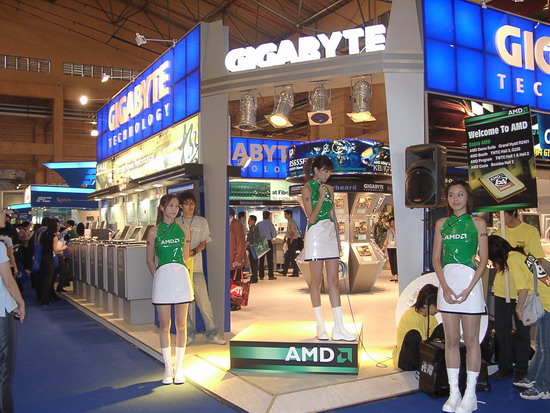 The AMD Athlon FX51 based solutions were of most interest in September, and Gigabyte was one of the companies to offer such solution. 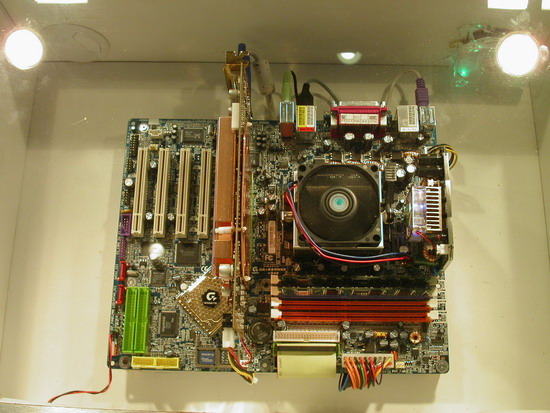 The system is built on the K8NNXP-940 board based on the NVIDIA nForce3 Pro 150, it's also equipped with the FX 5900 Ultra graphics card and GEIL's DDR500 memory. What impressed me in such system is the IEEE1394b 800 MB/s support. This interface is rarely integrated in desktop PCs (except Apple's PCs). Next to that system was the GV-R96P128DU card based on the ATI Radeon 9600 Pro chip. 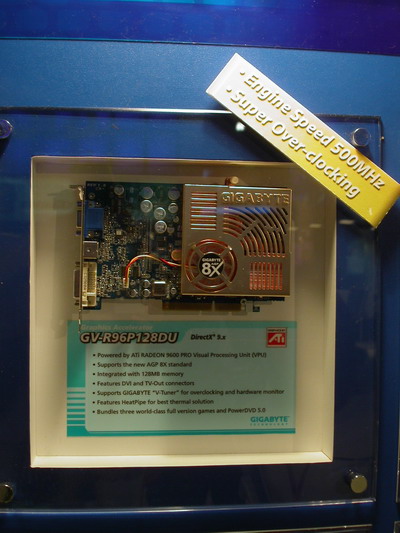 Gigabyte provides a wide support for various chipsets and is known for
a great deal of lines. The company demonstrated SIS based systems...
... and boards based on VIA's solutions.
They didn't ignore Intel either. For example, the Gigabyte 8I848P-L
board built on the Intel 848P chipset is positioned for the market of value
but high-performance systems.
The P4 Titan GT series is developed for expensive high-performance systems with all possible I/O ports. The boards support two new technologies - Gigabyte C.I.A. (CPU Intelligent Accelerator) and Gigabyte M.I.B. (Memory Intelligent Booster). The new ATX family supports the Pentium 4 with Hyper-Threading and 800 MHz FSB, dual-channel DDR 400, AGP 8X bus, Serial ATA ports, USB 2.0, 6-channel audio (AC97), UAJ (Universal Audio Jack) and 5 PCI 2.3 slots. The most advanced version - GA-8IPE1000 Pro 2 - also features the IEEE 1394 controller (Texas Instrument), and Gigabit LAN interface (Intel PRO/1000 CT, 82547EI CSA). Two other boards of this series - GA-8IPE1000 Pro and GA-8IPE1000/-L, don't have the Gigabit LAN interface, and the latter is deprived of the IEEE 1394 interface and DualBIOS. The Gigabyte C.I.A. (CPU Intelligent Accelerator) integrated into the
P4 Titan GT series monitors CPU load and automatically corrects the overall
system performance. The M.I.B. technology (Memory Intelligent Booster)
optimizes data exchange between the CPU, north bridge and memory.
This is so long awaited Centrino based notebook Gigabyte NB-1401. 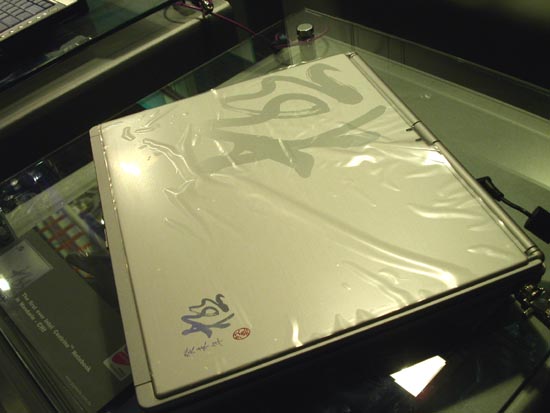 The NB1401 integrates the Intel 855GM + ICH4-M chipset, Intel Pentium M 1.3/1.4/1.5/1.6/1.7 GHz, 2 DDR SO-DIMM slots (up to 2 GB), 14.1" XGA display, 20 GB, 30 GB, 40 GB, 60 GB or 80 GB hard drive, slim 9.5 nm optical combo DVD/CD-RW drive, wireless LAN Intel 10/100 Mbps Ethernet interface, 56K v.90 modem, and PCMCIA Type II slot. The case is made of the aluminum-magnesium alloy. The system with the Microsoft Windows XP is going to sell in Europe at $2,000. Below you can see the notebook PC announced for the first time at Computex 2003. The NB201 is based on the Intel Pentium M and has 2 DDR SO-DIMM slots (up to 2 GB), a 12.1" XGA screen and a standard set of ports. The computer weighs only 1.56 kg. Its price is not known yet. 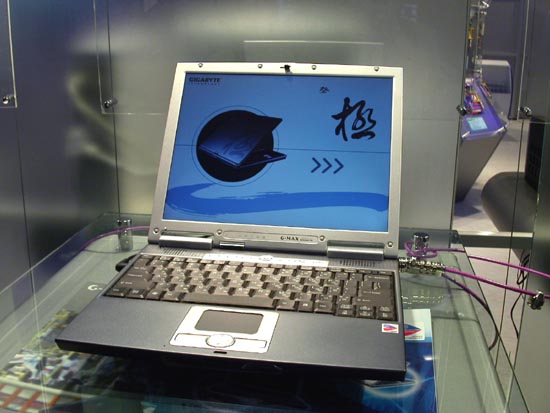 Apart from mainboards and graphics cards Gigabyte also displayed wireless
communication solutions.
MSI's booth also attracted much attention. The company showcased a lot
of mainboards on various chipsets, and most of them were for AMD's processors.
MSI has very favorable conditions for selling their boards designed for
Athlon 64, Opteron and Athlon FX processors. Thus, the company offers systems
that consist of a mainboard, rare AMD processors and memory. But MSI also
produces Socket A solutions based on VIA's chipsets.
In contrast to ASUS and Gigabyte, MSI works on very promising solutions - Barebone systems. I can't say ASUS neglects it completely, but MSI pays special attention to it. 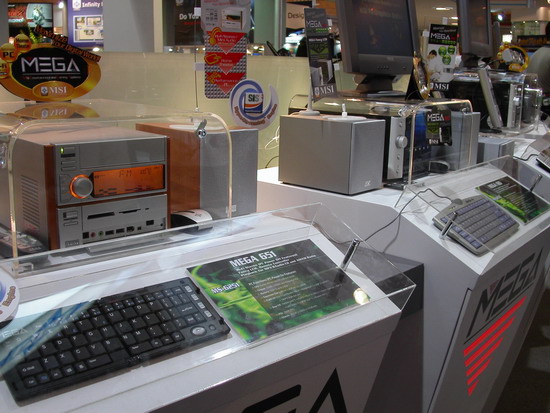 A user can choose a system both for AMD's processors... MSI shares the idea of convergence of various devices and offers its own Home Media Center models... 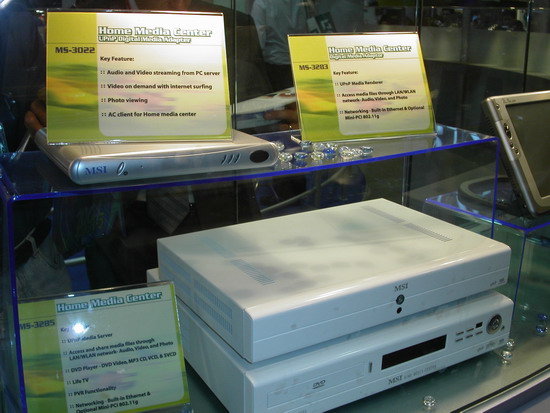 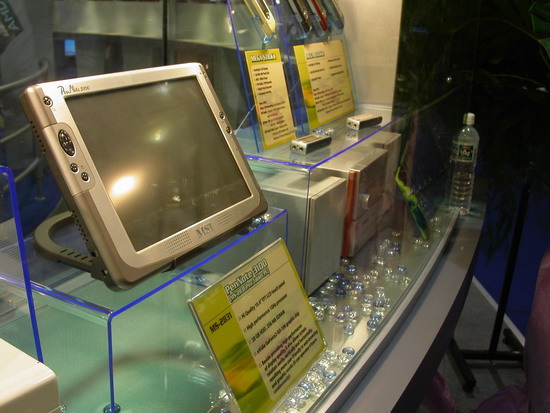 MSI's video systems always looked original. Thus, the NVIDIA FX5600 based card integrates a special cooling technology.  We also noticed the MSI FX5200 Personal Cinema and USB 2.0 TV-Box systems
meant for those who love watching TV on their PC monitors.
Optical reading and recording drives are another MSI's successful sphere
of activity.
MSI was almost first to provide support for the Serial ATA interface in its combo drive. 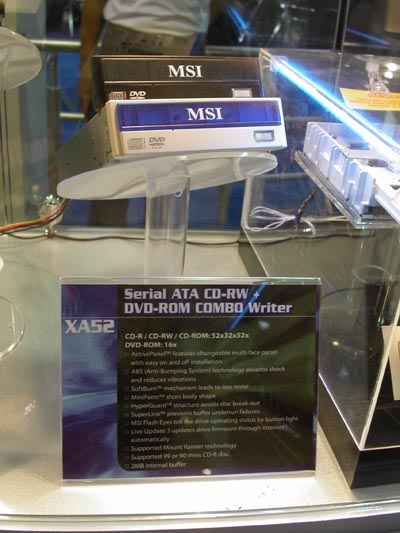 Like any other Taiwanese monsters, MSI offered various wireless solutions,
including Bluetooth mice and keyboards.
ABIT's booth was located in another hall, but there were eyepopping exhibits as well. That is why after studying the booths of the IT giants I went to have a look at the others. ABIT had some interesting solutions from the first days of the Computex Taipei 2003. 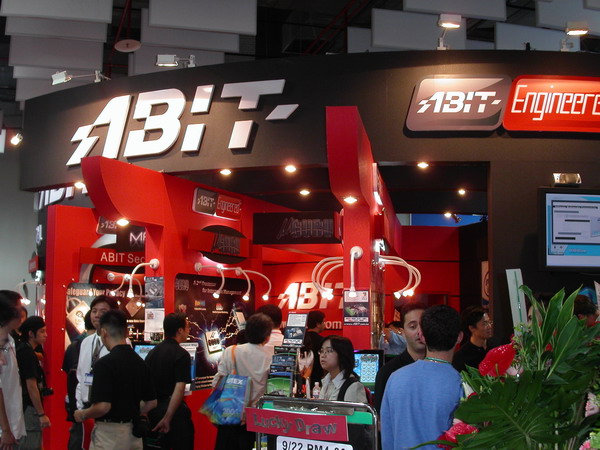 
Secure IDE allows for on-the-fly encrypting of data recorded on hard drive.  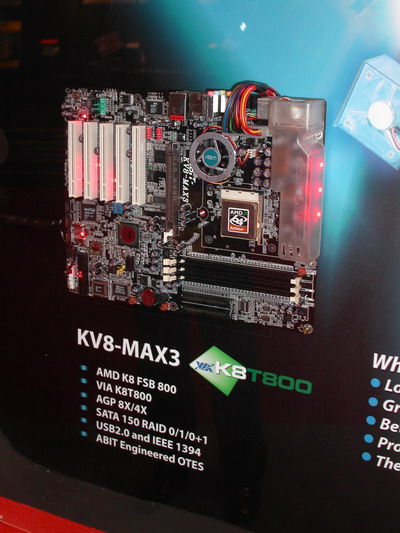 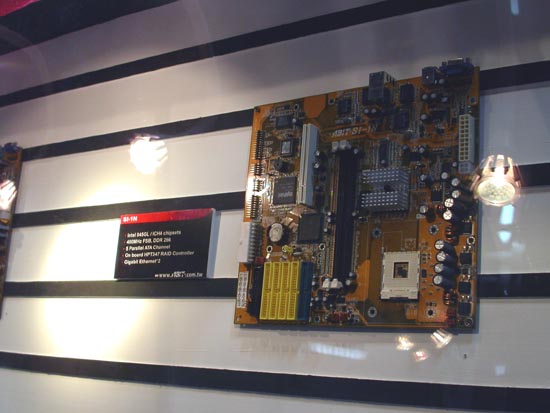
Alexander Vorobiev (vorobiev@ixbt.com)
Write a comment below. No registration needed!
|
Platform · Video · Multimedia · Mobile · Other || About us & Privacy policy · Twitter · Facebook Copyright © Byrds Research & Publishing, Ltd., 1997–2011. All rights reserved. |